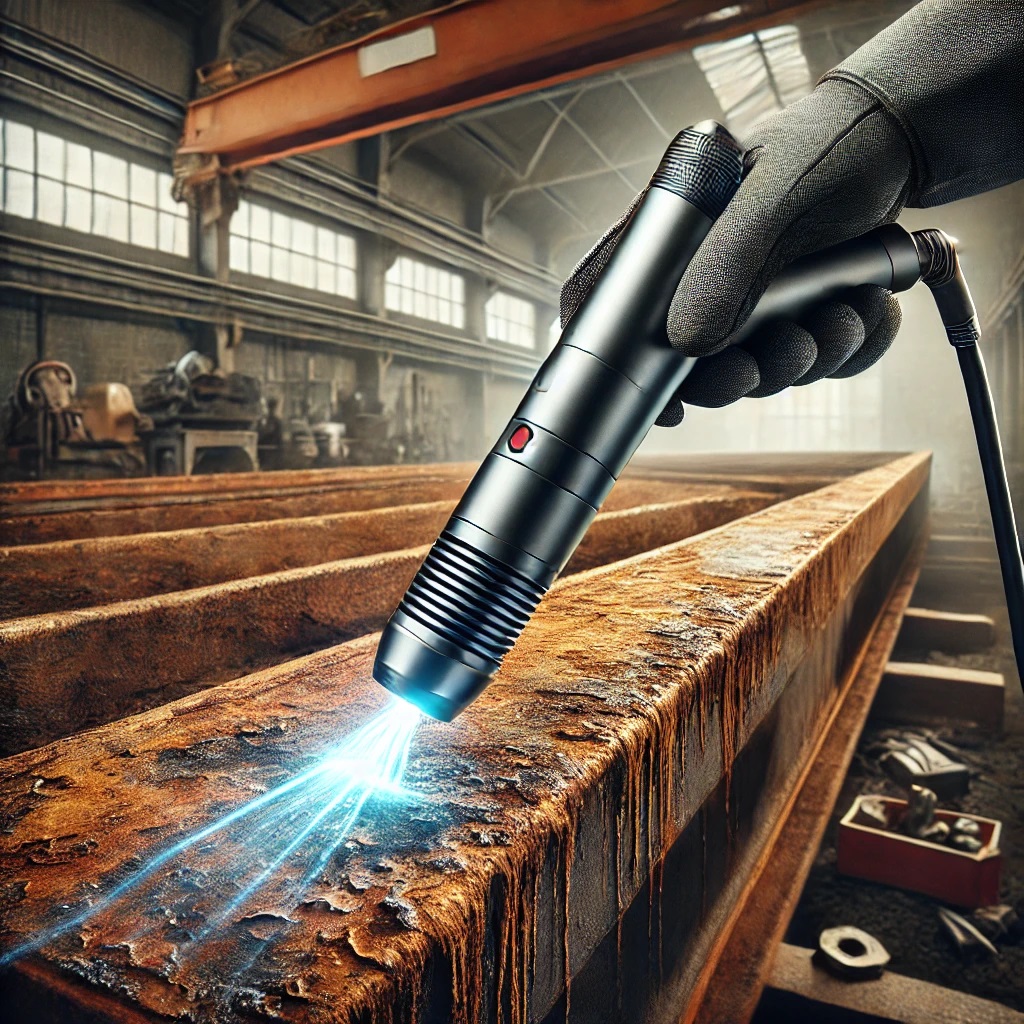
Rust is the silent destroyer of metal surfaces, creeping in unnoticed and slowly eroding the integrity of structures and tools. Traditional methods of rust removal, such as sandblasting or chemical treatments, can be messy, time-consuming, and sometimes harmful to the environment. Enter laser rust removal—a cutting-edge technology that offers a precise, eco-friendly, and efficient alternative. But one question remains at the forefront: how long does it take to remove rust with a laser? In this article, we’ll delve into the details, providing a comprehensive answer while exploring the advantages and nuances of rust removal laser.
Understanding Laser Rust Removal
Laser rust removal utilizes high-powered laser beams to vaporize the rust layer on metal surfaces. The laser is highly focused, allowing for precise control over the area being cleaned. This method is ideal for applications where accuracy and preservation of the base material are critical, such as in the automotive, aerospace, and conservation industries.
The process works by directing a laser beam onto the rusted surface. The energy from the laser heats the rust, causing it to evaporate or sublimate without affecting the underlying metal. This is particularly advantageous for delicate or intricate parts that more aggressive cleaning methods might damage.
Factors Influencing the Time for Laser Rust Removal
The time it takes to remove rust with a laser can vary significantly based on several factors:
- Extent of Rust: The thickness and density of the rust layer are primary factors. A light surface rust might only take a few seconds to remove, while a deeper, more ingrained rust can take much longer.
- Laser Power: Higher-powered lasers can remove rust more quickly. The power of the laser typically ranges from 20 watts to several kilowatts, with more powerful lasers being able to clean larger areas faster.
- Surface Area: The size of the cleaned area also affects the time. Smaller, detailed work on intricate components will take longer than cleaning a large, flat surface.
- Material Type: Different metals react to laser cleaning at different rates. Some materials may require more time and precision to clean effectively.
- Precision Required: If the job requires extreme precision, such as in restoring historical artifacts, the process will naturally take longer due to the care needed to preserve the underlying material.
Typical Time Frame for Laser Rust Removal
On average, laser rust removal can take anywhere from a few seconds to several hours, depending on the factors mentioned above. For example, cleaning a small, lightly rusted part could be completed in just a few minutes. However, a larger surface area with heavy rust might require several hours of work.
The efficiency of laser rust removal is a significant advantage, especially when compared to traditional methods. While sandblasting or chemical treatments might require extensive preparation, cleanup, and safety precautions, laser rust removal is often a quicker, cleaner, and more straightforward process.
Advantages of Laser Rust Removal
- Precision: Lasers provide unmatched precision, making them ideal for delicate surfaces where traditional methods might cause damage.
- Eco-Friendly: Laser rust removal does not use chemicals, abrasives, or other potentially harmful substances, making it an environmentally friendly option.
- Minimal Waste: The process produces minimal waste, as the rust is vaporized and typically does not require any cleanup beyond the immediate area.
- Cost-Effective: Although the initial investment in laser equipment can be high, the reduced time, labor, and material costs often make it a cost-effective solution in the long run.
- Versatility: This method can be used on a wide variety of materials and surfaces, from steel and iron to more delicate metals like aluminum and copper.
Frequently Asked Questions (FAQs)
Q1: Is laser rust removal safe?
A: Yes, laser rust removal is safe when conducted by trained professionals using appropriate safety measures. The process does not involve chemicals or abrasive materials, reducing the risk of exposure to harmful substances.
Q2: How much does laser rust removal cost?
A: The cost can vary depending on the size of the job, the equipment used, and the complexity of the rust removal. However, it is generally more cost-effective in the long term due to the reduced need for consumables and faster processing times.
Q3: Can laser rust removal be used on any metal?
A: Laser rust removal is suitable for most metals, including steel, iron, aluminum, and copper. The process is adjustable, allowing for the safe cleaning of both sturdy and delicate surfaces.
Q4: What are the maintenance requirements for laser rust removal equipment?
A: Maintenance for laser equipment is relatively straightforward, involving regular cleaning of the lens and periodic checks of the laser system to ensure optimal performance.
Q5: Does laser rust removal affect the base material?
A: When done correctly, laser rust removal does not damage the underlying material. The precision of the laser allows it to remove rust without altering the metal surface.
Conclusion
Laser rust removal is revolutionizing how we approach the maintenance and restoration of metal surfaces. With its precision, efficiency, and eco-friendly attributes, it stands out as a superior method for rust removal. The time it takes to complete the process varies based on several factors, but the overall benefits far outweigh the duration. As technology advances, laser rust removal is set to become even more efficient, offering an unparalleled solution to rust-related challenges.
